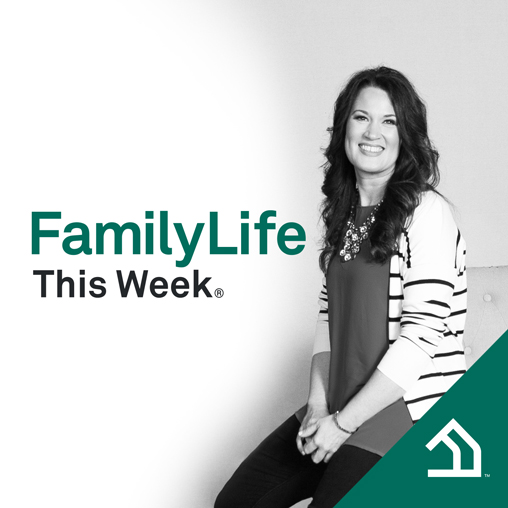
Explaining Easter and Lent to Kids
Easter and Lent should be a big deal for believers and their families. How does one communicate the sober reality of Good Friday leading to the celebration of Easter and Lent Sunday with children? Sally Lloyd-Jones and Phil Vischer give examples of how and why to tell the whole Easter and Lent story to your children.
Show Notes
About the Guest
-
Easter and Lent should be a big deal for believers and their families. How does one communicate the sober reality of Good Friday leading to the celebration of Easter and Lent Sunday with children? Sally Lloyd-Jones and Phil Vischer give examples of how and why to tell the whole Easter and Lent story to your children.
-

Phil Vischer
Phil Vischer made his first animated film when he was nine years old; by the age of fourteen, he was convinced he would be a filmmaker when he grew up. After a brief stint at a Bible college, Phil struck out on his own, looking for a way to integrate his faith with his filmmaking. This quest led him to a tomato and a cucumber. The year was 1991, and Phil was a newly married 25 year-old with no financial backing and no idea how his vegetables would ever see the light of day. Today, almost 65 mi...more
Sally Lloyd-Jones
Sally Lloyd-Jones is a leading writer of inspirational books for children. She is the author of three bestselling children’s Bibles, including the Moonbeam Award winner and ALA notable The Jesus Storybook Bible, as well as Thoughts to Make Your Heart Sing, winner of the ECPA Inspirational Book award. She has written many picture books for children, such as the critically acclaimed New York Times bestseller How to Be a Baby: By Me, the Big Sister and ...more
How does one communicate the significance of the Easter and Lent season with children? Sally Lloyd-Jones and Phil Vischer explain how and why to tell the whole Easter and Lent story to your kids.
Explaining Easter and Lent to Kids
Bob: Right.
Phil: One of the questions we answer in What’s in the Bible? is: “Why does God give us a thousand years of Israel messing up? Why not just—once you have the flood, it’s a mess—bring in Jesus/cue the Messiah.” No, we have a thousand years of Israel messing up over and over again. We explain this to kids; we walk them through it. The messing up part usually isn’t in kids’ Bibles, so they aren’t learning this in Sunday school.
We see them messing up for a thousand years so we know we can never get it right. We can/no matter how hard we try—we have God’s rule book; we have the Pentateuch—we have a thousand years. Even if we had a thousand years, we could never get it right. We could never live up to God’s holiness. You have to understand God’s holiness. It was/He was so holy that people occasionally just died. [Laughter]
Bob: Right.
Phil: There is like—the two brothers that ran into the temple as soon as it was dedicated; they offer a sacrifice—boom! They drop dead. We tell that story! That’s not in any kids’ Bibles because it’s kind of intimidating.
Kids aren’t opposed to learning things; they are opposed to being bored. They hate being bored; but if you can explain the Septuagint in a fun way—and that was one of the questions—we answer the tricky questions. Someday, your kid is going to sit down next to a Catholic friend and notice that their Bible has books in it that aren’t in your Bible. If no one has ever explained that, that’s really disorienting: “You know, why didn’t anybody tell me?” We explain that: “Why are there more books in the Catholic Bible than there are in a protestant Bible? Where did they come from?”
We want to give kids a foundation; so they won’t have their faith knocked out from under them when they get to high school; when they get out of their Sunday school class; and they get out of their nursery, where we’ve put the nice Noah’s ark wallpaper borders up that don’t have any bodies floating around the ark. It’s just all the good stuff; it’s/have you ever noticed that? [Laughter]
Bob: Lots of giraffes.
Phil: Lots of giraffes.
Dennis: No hooves upside down. [Laughter]
Phil: No float; no. [Laughter] It’s like: “Wasn’t the flood fun? That was such a fun outing.” Like: “NO! It was God’s judgment on the world!”
Dennis: Let’s go back to the judges for a moment.
Phil: Yes.
Dennis: Everyone knows the story of Samson, Gideon; but when it comes to a judge like Jephthah, are you telling—
Phil: Yes.
Dennis: —that story?
Phil: No, no; what we’re not doing is trying to tell every individual story from the Bible. What we’re doing is telling the macro story of the Bible; we start out by saying: “What is the Bible? It is the story of God and us. Now, let’s tell that story.” If there is a story that ties into God’s rescue plan—and we talk about sin; sin usually doesn’t come up in kids’ Bibles either—we talk about sin. We actually visualize it, because we know the concept of sin entering creation. Sin/we have the stain of sin on us, so we actually visualize sin.
If you are a Trekkie—like I was when I was a kid—there was an episode called “Trouble with Tribbles.” The starship Enterprise got overrun by these little, furry hamster things that just kept multiplying. I thought, “Well, that’s kind of like sin.” We made these little furry things that fall in and stick to Adam and Eve, with little faces, going, “Arr,” “Arr,” “Arr,” “Arr.” Kids are like, “Okay, that’s the stain of sin”; you’ve got sin on you. The problem is sin can’t be close to God. So if you have the stain of sin on you, it means you can’t be close to God. God made a rescue plan to get the stain of sin off of us to take care of the problem of sin.
Now, if kids don’t have that, you don’t even know why you need a New Testament. If all they have is Adam and Eve, and the ark, and the lion’s den, and then Jesus, it’s just a bunch of stories. We really need to tell the whole arc of Scripture, which includes the keys of: the fall; sin, our inability to be close to God when we have sin on us; and then His amazing rescue plan. That’s the story in the Bible.
[Studio]
Michelle: Phil Vischer—a powerful storyteller with a passion to tell the truth, and the whole truth, and nothing but the truth. I am so thankful for him.
You know, we have great cause to celebrate Easter this weekend: for God sent His Son, Jesus, to live on earth. He taught us how to live. He died on the cross for our sins. He was buried. On the third day, He rose again and is now seated at the right hand of God, where He is interceding for us.
There is a hymn that I love to sing during this season. The third verse is so rich; it goes like this: “Love’s redeeming work is done. Alleluia. Fought the fight, the battle won. Alleluia. Death in vain forbids His rise. Alleluia. Christ has opened Paradise. Alleluia.” I’d sing, but you don’t want to hear me; but we do have a link on our website to a great version of that hymn, which is Christ the Lord Is Risen Today. Go to our website, FamilyLifeThisWeek.com; that’s FamilyLifeThisWeek.com.
Hey, if you’re a working mom—oh, let me clarify that; because I know all moms work—100 percent of all moms work. But if you are a working mom, outside the home, do you deal with mom guilt? You know what I’m talking about; right? As my friend, Megan says, it’s the constant feeling you’re missing something somewhere, and you just can’t seem to find it. We’re going to talk with my good friend and co-worker, Shannon Simmons, next week. We’re going to discuss mom guilt and how to deal with it.
Thanks for listening today. I want to thank the president of FamilyLife®, David Robbins, along with our station partners around the country.
Our program is a production of FamilyLife Today, and our mission is to effectively develop godly families who change the world one home at a time.
I'm Michelle Hill, inviting you to join us again next time for another edition of FamilyLife This Week.
We are so happy to provide these transcripts to you. However, there is a cost to produce them for our website. If you’ve benefited from the broadcast transcripts, would you consider donating today to help defray the costs?
Copyright © 2022 FamilyLife. All rights reserved.
1

